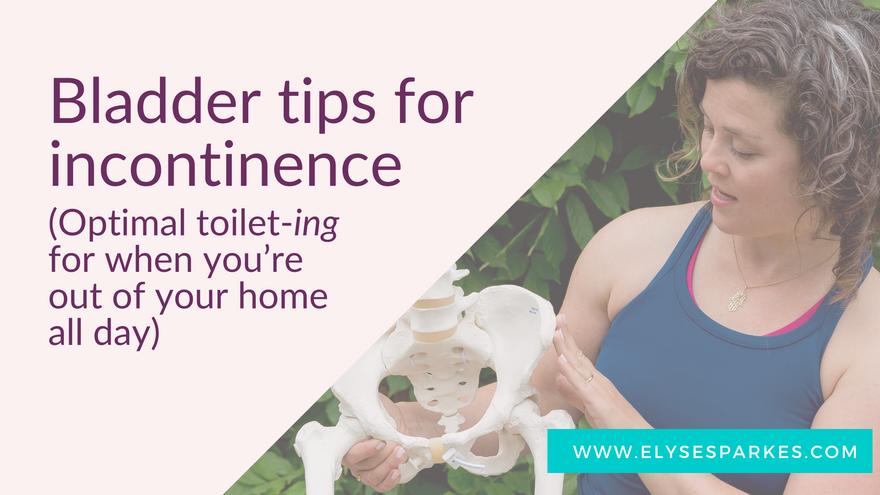Bladder tips for incontinence

When you're out and about all day, it's common to have anxiety about how / where / when you'll use the bathroom.
Especially if you experience pelvic floor issues like urge incontinence (like feeling a sudden urge to urinate or dribbling urine) or stress incontinence (like peeing a little bit when you do something with impact such as laughing, coughing, running, jumping, sneezing, etc)!
Here are some ideas to keep in mind for optimal toilet-ing tips for when you are out all day:
→ Sit down fully on toilet - If the seat is dirty, safely clean it and use a seat cover or toilet paper barrier on the seat. Your pelvic floor musculature can not fully relax for elimination (pee or poo) when you're hovering in a squat over the toilet seat.
→ Avoid “peeing just in case” - A hard one, I know! However, this trains your bladder to empty before it's ready and can make urgency/frequency symptoms worse. Typically the bladder needs to empty every 2-4 hours. Of course you may need to "just in case" pee from time to time, but try to minimize it.
→ Don't avoid drinking water! - You still need to stay hydrated and avoiding drinking doesn't necessarily mean you won't need to go to the bathroom. It's better to sip small amounts of water throughout the day, rather than restricting your intake and then gulping down a lot.
→ If you leak urine after you've just peed, stay on the toilet for 30-60 extra seconds and do some simple movements - Try a few pelvic tucks and tilts or stand and sit a few times (like a squat) to see if any more urine comes out before getting up.
→ Walk rather than race - Easier said than done, but if possible, don't rush to the toilet even if you feel a sudden strong urge to urinate. Instead of running, try a few calf raises (keep your toes on the ground and lift and lower your heels) or a few breaths focused into your pelvic floor area and then walk to the bathroom.
→ Keep moving! - Improving your hip mobility / stability and strengthening the surrounding muscles can help keep your pelvic floor balanced and able to perform its job very well. These 5 simple standing moves are easy to fit into your day.
*This is not meant to replace medical advice, talk to your medical provider to make sure these are right for you.
Many women I work with are surprised to hear some of these!
Do any of these come as a surprise to you?
Which one do you struggle with?
Which one will you try?
Leave a comment to let me know!
With love, pelvic health, and body kindness,



0 comments
Leave a comment
Please log in or register to post a comment